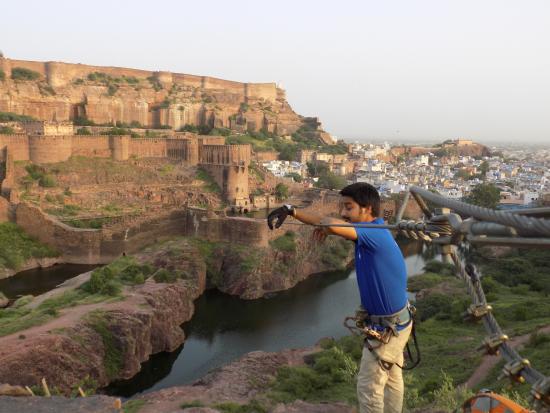Rajasthan, the “Land of Kings,” is a state steeped in history and adorned with magnificent monuments that narrate tales of valor, royalty, and artistry. Its rich cultural heritage is preserved in its formidable forts, opulent palaces, and intricate temples. Here are some of the most famous historical monuments in Rajasthan.
Amber Fort, Jaipur
Perched on a hill overlooking Maota Lake, Amber Fort is a breathtaking blend of Hindu and Mughal architectural styles. Built by Raja Man Singh in the 16th century, the fort is known for its stunning courtyards, palaces, and the intricate Sheesh Mahal (Palace of Mirrors). The intricate carvings, detailed mosaic work, and grand halls like Diwan-i-Aam (Hall of Public Audience) and Diwan-i-Khas (Hall of Private Audience) showcase the opulence of the Rajput rulers.
Mehrangarh Fort, Jodhpur
Towering 400 feet above the city of Jodhpur, Mehrangarh Fort is one of the largest and most impressive forts in India. Built by Rao Jodha in the 15th century, its massive walls enclose several palaces, intricately carved courtyards, and a museum that houses a rich collection of artifacts, arms, and royal costumes. The fort offers a panoramic view of the “Blue City” and stands as a symbol of the strength and grandeur of the Rathore dynasty.
Jaisalmer Fort, Jaisalmer
Known as Sonar Quila (Golden Fort), the Jaisalmer Fort is a UNESCO World Heritage Site and a living fort, with a quarter of the city’s population still residing within its walls. Built in 1156 by Rawal Jaisal, it is an architectural marvel carved from yellow sandstone, which gives it a golden hue, especially at sunset. The fort is a labyrinth of narrow lanes, havelis (mansions), Jain temples, and bustling markets.
Chittorgarh Fort, Chittorgarh
Chittorgarh Fort is a symbol of Rajput pride, valor, and sacrifice. The largest fort in India, it stands on a massive hill and has a history of battles and sacrifices, including three major jauhars (mass self-immolation) by the royal women. The fort complex includes several palaces, temples, and towers like the Vijay Stambh (Tower of Victory) and Kirti Stambh (Tower of Fame), each telling a story of its glorious past.
Kumbhalgarh Fort, Rajsamand
Famous for having the second-longest continuous wall in the world after the Great Wall of China, Kumbhalgarh Fort is a formidable structure situated in the Aravalli hills. Built by Rana Kumbha in the 15th century, the fort is a UNESCO World Heritage Site and the birthplace of Maharana Pratap. Its impressive 36-kilometer-long wall and stunning hilltop location make it a must-visit.
Hawa Mahal, Jaipur
The Hawa Mahal, or “Palace of Winds,” is one of Jaipur’s most iconic landmarks. Built in 1799 by Maharaja Sawai Pratap Singh, this five-story palace, with its distinctive beehive-like facade, was designed to allow the royal ladies to observe street life and festivals without being seen. Its 953 jharokhas (small windows) with intricate latticework served as a clever air-conditioning system, keeping the palace cool.
Other Notable Monuments
- Umaid Bhawan Palace, Jodhpur: A magnificent palace that is part royal residence, part luxury hotel, and part museum.
- City Palace, Udaipur: Overlooking Lake Pichola, this palace complex is a stunning blend of Rajasthani and Mughal architecture.
- Junagarh Fort, Bikaner: An unconquered fort known for its impressive architecture and beautiful palaces.
- Jal Mahal, Jaipur: A beautiful palace located in the middle of Man Sagar Lake.
- Ranthambore Fort, Sawai Madhopur: Situated within Ranthambore National Park, this fort has a long history and offers stunning views.
Sources
